Reviewing Job Results
Once the deployment (Windows and Linux assets) or rollback (Windows assets only) job is created, it runs immediately (On-Demand) or on a specified schedule. You can view the results of a job run, whether all patches got successfully installed/rolled back or there are failures.
Viewing Job Results
To view the job results, go to Jobs, then from the Quick Actions Menu of a job, click View Progress.
- You can see the assets on which the patch deployment/rollback job was run, and the job status in the STATUS column. Also, in the PATCHES column, you can see the Installed, Failed, and Skipped patches details.
- As shown in the following screen capture, you can see the assets that are in different patch deployment job result statuses. Unlicensed assets are displayed as "Not Licensed" in the results.
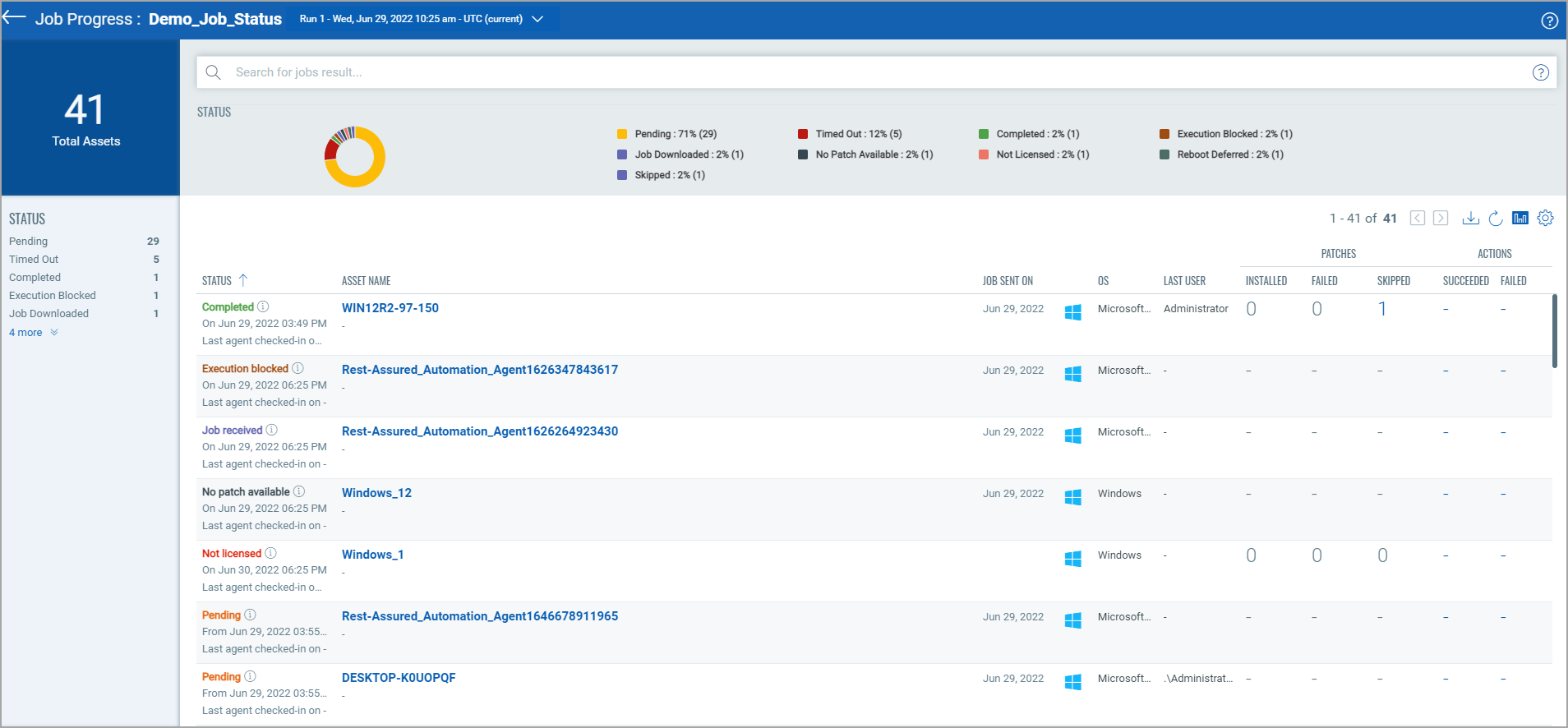
Note: The patch job is skipped for the Linux assets for which the job was Not Applicable due to different platforms of assets and patches. Such assets are shown as "Not Applicable" on the UI.
- The pie chart provides a percentage-wise breakup of all asset statuses and allows you to select one or more statuses to filter assets. This pie-chart shows all statuses even if you choose any other status from the left panel.
- You can also see the following patch count for Windows jobs:
a) INSTALLED: Number of patches that were successfully deployed on the agent in the latest job run.
b) FAILED: Number of patches that failed to install due to some errors on the agent in the latest job run.
c) SKIPPED: Number of patches that were skipped in latest job run.
A few patches might be skipped because the patches are not applicable for the asset, superseded by another patch, or are already installed.
Note: The error logs for failed patches of Linux patch jobs are stored only for 14 days.
Job activities corresponding to the reboot messages and notifications displayed for the asset, are logged at the following location:
% USERPROFILE%\AppData\Local\Qualys\QualysAgent\QAgentUiLog.txt
- When patching starts on your assets, you receive the interim job results when the job takes a longer time to complete. In the interim job results, you can see the relevant patches number and an info icon next to it. When you click the info icon, you can see the interim job results and associated number of patches. When you click the associated number of patches, the 'Patching Status' window is shown that details out the interim job results and patch names. The interim job results are "Executing", "Pending Execution", "Pending Reboot", and "Pending Verification".
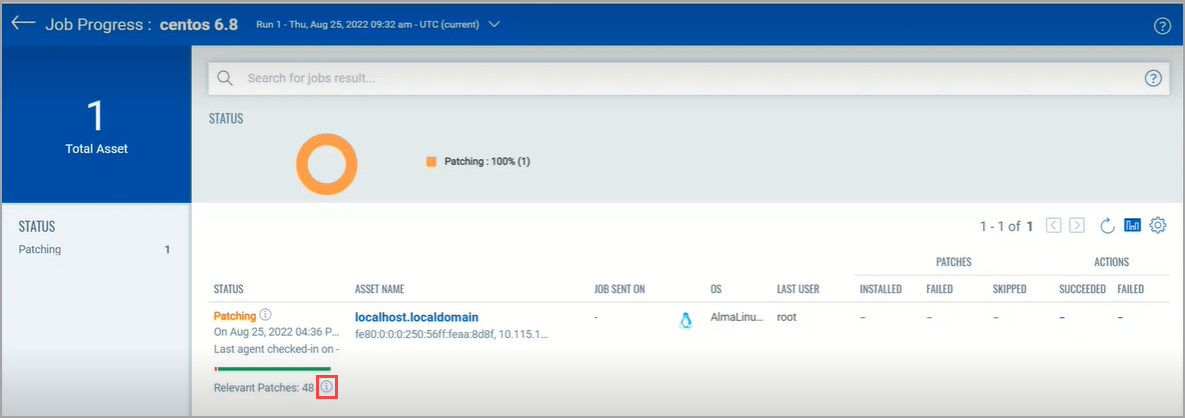
a) Executing: Patches that are being installed.
b) Pending Execution: Patches that are pending for installation.
c) Pending Reboot: Patches for which an asset reboot is required as the patch job is effective only after the assets are rebooted.
d) Pending Verification: Patches for which post install validation is pending that is the patch scan after the job completion is pending.
Viewing Job Results for Recurring Jobs
- For recurring jobs, you can see the job result history of the latest ten job runs. By default, the latest job run instance is shown. You can see an individual job run by expanding the list that is next to the job name. The list includes the details, such as job run number, job run date, and the time zone. By clicking a particular run from the list, you can see the patching status of your assets for that job run.
a) When a job is scheduled to run in a specific time zone, the job run history list shows the time details according to UTC.
b) When the job runs according to the agent time zone, the job run history list shows the time details according to the Agent Timezone.
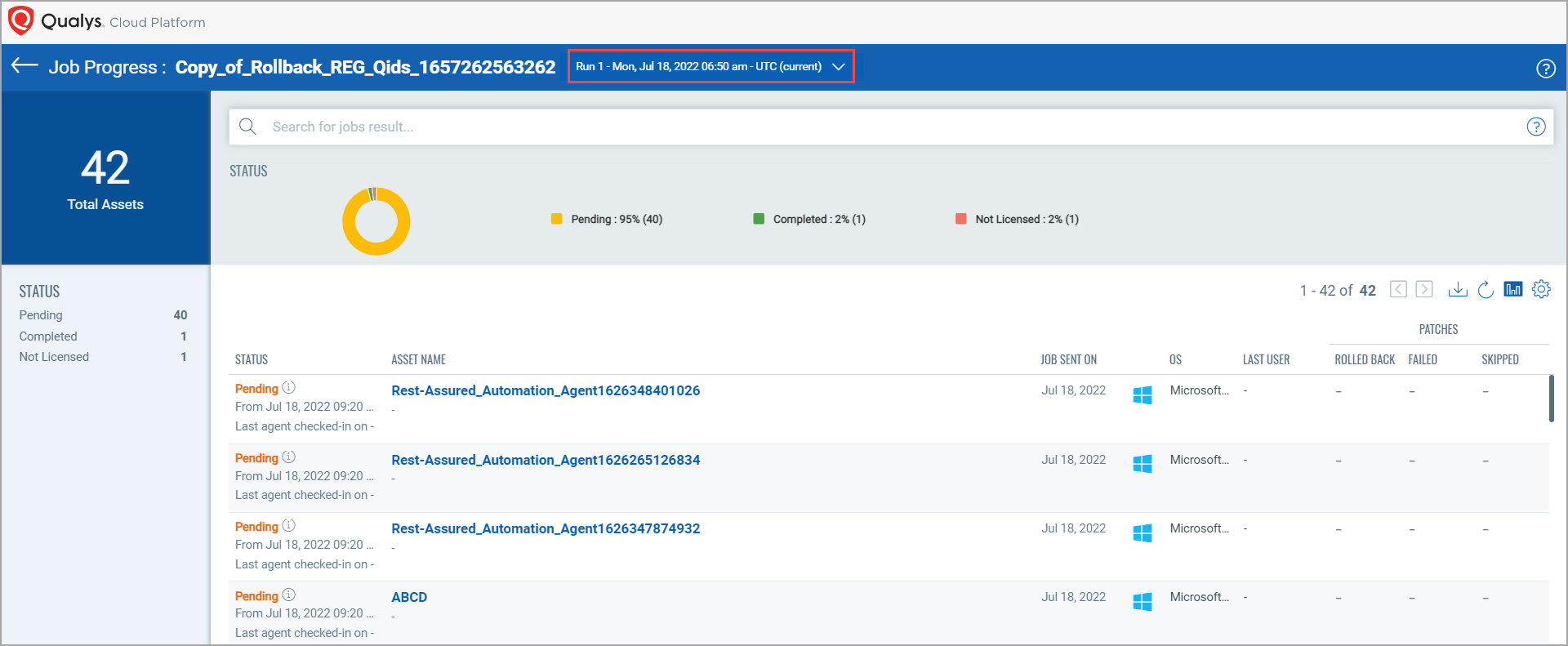

Good to Know About Recurring Jobs
- From the Patch Management 1.9.0.0 release, the results for the last 10 job runs are shown as and when they are received. In the earlier releases, only the latest job run results were shown.
- For all jobs, except jobs with “Disabled” status, the assets count shown in the Assets column on the "Jobs" page is dynamic in nature. The count is shown as per the latest job run. When the job manifest is sent to the agent in the next job run, the asset count gets changed.
- On the "Job Progress" page, any tag changes made are reflected in your next job run.
- When you view details for a particular recurring job from the Quick Actions menu, you see the asset details for the latest job run instance only.

- For Windows jobs, you can download the job progress report for an individual job run instance of the recurring job. To download the report, from the quick actions menu of a particular job, click View Progress. From the Job Progress page, select the job run and click the Download icon and then click Generate Report.
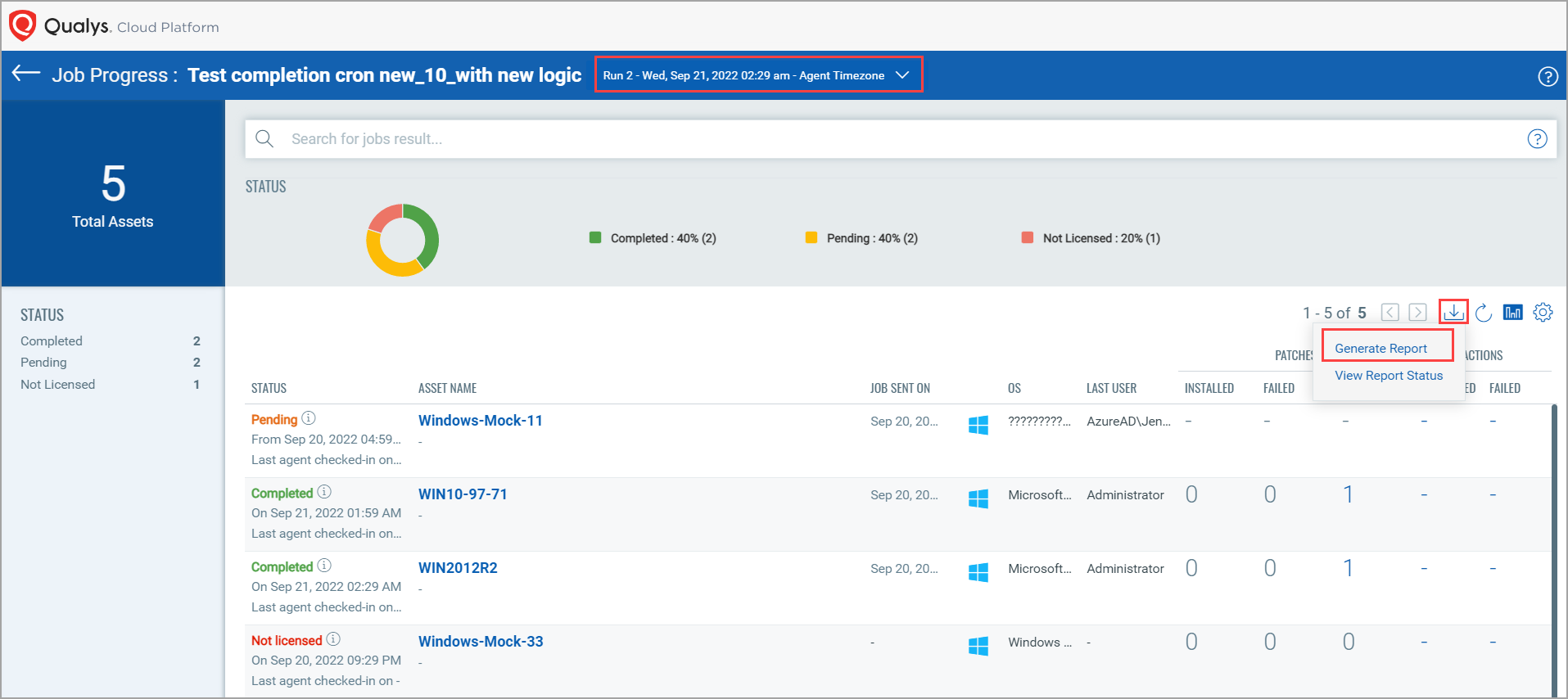
From the Generate Report message window, choose whether you want to include the results of pre-actions and post-actions in the report and click Generate.
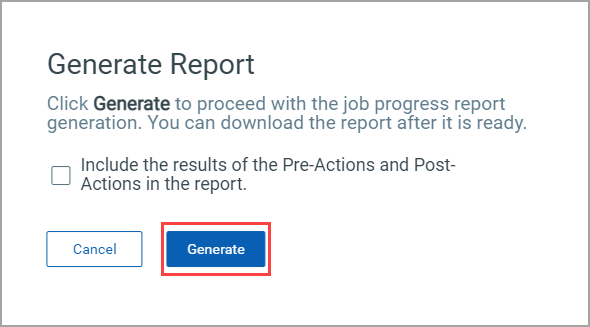
Viewing Action Result Details
You can now add actions that you want to execute before and after the patches are installed for the Windows Deployment job. For more information, see About Pre-Actions and Post-Actions.
The View Actions option on the Job Progress page allows you to view results details of actions after the job is executed.

You can the view action details from the Job Progress option:

To view the script that was executed, click individual actions:
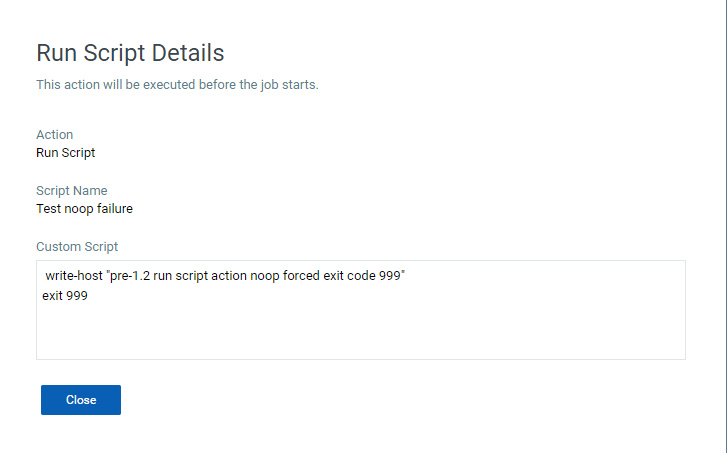
See Also